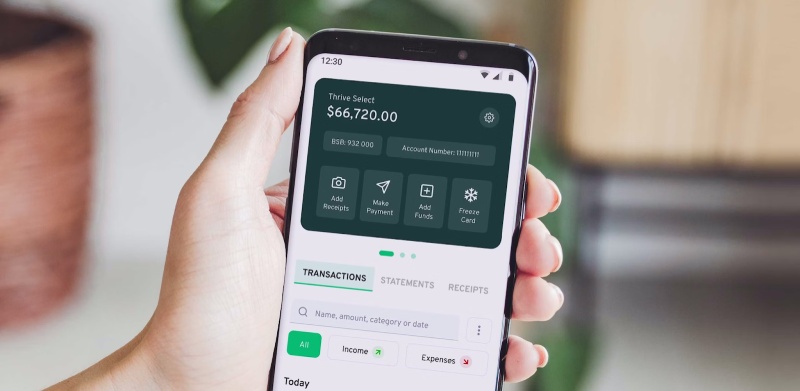
Blockchain technology has revolutionized various industries by providing a decentralized and transparent platform for digital transactions. As blockchain continues to gain popularity, the need for efficient and robust transaction processing becomes crucial. This is where transaction simulation plays a vital role. Transaction simulation in blockchain development offers numerous benefits and use cases, ranging from optimizing blockchain protocols to evaluating consensus algorithms. In this article, we will explore the advantages and applications of transaction simulation, highlighting its significance in the ever-evolving world of blockchain technology.
One of the significant benefits of transaction simulation in blockchain development is the ability to optimize blockchain protocols. Transaction processing algorithms are at the core of any blockchain system, and their efficiency directly impacts the overall performance of the network. By simulating various transaction scenarios, developers can test and tune these algorithms to ensure optimal performance.
Transaction simulation allows developers to evaluate the effectiveness of different algorithms in handling varying transaction loads. By replicating real-world transaction volumes, developers can identify potential bottlenecks and fine-tune the protocols accordingly. This iterative process of testing and tuning helps in enhancing the scalability and throughput of blockchain networks, ensuring smoother transaction processing.
Moreover, transaction simulation provides developers with a platform to experiment with different consensus mechanisms. By simulating transactions and analyzing their impact on the consensus algorithm, developers can make informed decisions regarding the most suitable consensus mechanism for their blockchain project. This optimization process not only improves the transaction processing speed but also enhances the overall security and reliability of the blockchain network.
Another crucial use case of transaction simulation in blockchain development is network stress testing. Blockchain networks must be capable of handling a significant number of transactions without compromising their performance. Transaction simulation allows developers to assess the network’s resilience and transaction capacity under different stress scenarios.
By simulating high transaction loads, developers can gauge the network’s ability to handle increased traffic. This stress testing helps identify potential vulnerabilities, such as network congestion or transaction delays, that may arise during periods of high transaction volumes. Developers can then make necessary adjustments to improve the network’s scalability and ensure uninterrupted transaction processing.
Furthermore, transaction simulation enables developers to measure the transaction capacity of the blockchain network accurately. By simulating various transaction scenarios, developers can determine the maximum number of transactions that the network can handle without compromising its performance. This information is crucial for blockchain projects aiming to support a large user base and high transaction volumes. Transaction simulation helps in optimizing the network’s infrastructure to accommodate future growth and scalability requirements.
Smart contracts are self-executing contracts with predefined rules and conditions encoded within the blockchain. They play a vital role in blockchain-based applications, automating various processes and ensuring trust and transparency. Transaction simulation is an invaluable tool for testing and verifying the functionality of smart contracts.
By simulating transactions that interact with smart contracts, developers can thoroughly test the contract’s logic and behavior. Transaction simulation allows developers to mimic real-world scenarios and verify if the smart contract functions as intended. This testing process helps in identifying any potential bugs or vulnerabilities in the smart contract’s code, ensuring its reliability and security.
Transaction simulation also enables developers to evaluate the scalability of smart contracts. By simulating a large number of transactions interacting with the smart contract, developers can analyze its performance and identify any scaling limitations. This information is essential for optimizing the smart contract’s design and ensuring its smooth operation under varying transaction loads.
Consensus algorithms are fundamental to blockchain networks as they ensure agreement among participants on the validity of transactions. Transaction simulation plays a crucial role in evaluating the performance of consensus algorithms by simulating transaction flow within the network.
By simulating transactions and analyzing their impact on the consensus algorithm, developers can assess the algorithm’s performance under different scenarios. This evaluation helps in identifying potential weaknesses or inefficiencies in the consensus algorithm and provides insights into its scalability and reliability.
Transaction simulation also allows developers to experiment with different consensus algorithms and compare their performance. By simulating transactions and observing the consensus process, developers can make informed decisions regarding the most suitable consensus algorithm for their blockchain project. This evaluation helps in optimizing the consensus algorithm to ensure efficient and secure transaction processing.
In conclusion, transaction simulation plays a crucial role in blockchain development by offering various benefits and use cases. From optimizing blockchain protocols to evaluating consensus algorithms, transaction simulation enables developers to enhance the performance, scalability, and security of blockchain networks. Moreover, transaction simulation is instrumental in stress testing the network and verifying the functionality of smart contracts. As blockchain technology continues to evolve, transaction simulation will remain a vital tool in ensuring the efficiency and reliability of blockchain-based systems.
A strategic partnership between Adobe and LinkedIn aims to give creators better security for their… Read More
Sikar, Rajasthan | April 28, 2025 — After completing one successful year in the field… Read More
May is Small Business Month, a time to honor and recognize the achievements of the… Read More
Swiss International University (SIU) is on track to be one of the world's most respected… Read More
In a session that left students buzzing with fresh ideas and practical insights, Invertis University… Read More
At the 21st Shanghai International Automobile Industry Exhibition, which is surging with the wave of… Read More